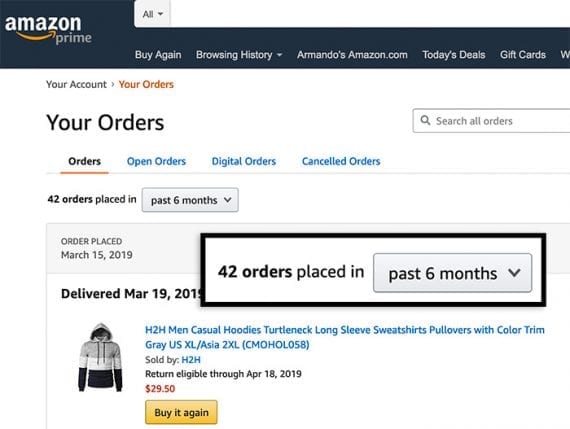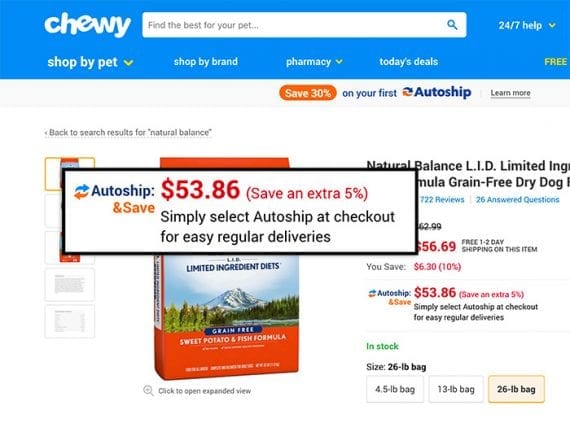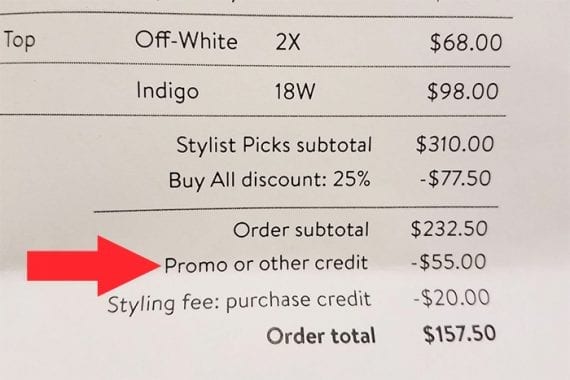Online retailers have the opportunity to transform every new visitor into a long-term, loyal customer who makes dozens or even hundreds of purchases over several years.
Try this as a test. Go to Amazon and log in. Find “Your Orders” under the “Accounts & Lists” link at the top right. How many orders have you placed in the last six months? Is it more than one?

Amazon excels at getting the next sale from its customers.
Now consider that while Amazon spends a mountain of money on marketing (about $13.8 billion in 2018), its marketing investment is just 5.9 percent of its net sales ($232.9 billion in 2018). And Amazon enjoyed 20-percent growth in net sales in the fourth quarter of 2018.
It is likely that many online retail businesses reinvest more than 5.9 percent of revenue into marketing. Add up the costs. There are dollars spent on pay-per-click ads and marketing software. There is labor expense in search engine optimization and content creation. So how does Amazon keep its marketing investment so low?
The answer might be found the “Your Orders” page. Amazon excels at making the next sale.
What follows are four inexpensive marketing ideas to help your ecommerce company make the next sale and earn more profit from existing customers.
Call Shoppers
Shopping cart abandonment could be a sign of failure. A customer placed an item in the cart. She entered some of her information. Then she left.
The retailer doesn’t know what happened. But something went wrong. Many ecommerce companies follow an abandoned cart with an email message. They want to find out if the customer had questions. Perhaps something went wrong with the checkout process. But why not call?
That is what Thomas did. Thomas works for a direct-to-consumer ecommerce company. His business connects its ecommerce platform, Shopify, to its customer service system, Freshdesk, via Zapier.
When a customer leaves an item in the cart after entering a phone number, Freshdesk is populated with a new ticket. The next available sales or customer service representative calls that customer.
This simple act results in many sales. For example, on a rainy Wednesday afternoon this month, Thomas generated more than $6,000 calling cart-abandonment customers.
These customers are known. They have visited your ecommerce store. They have picked a product. They just need a little help. So try calling.
Automate Marketing Messages
The thank you message an ecommerce business sends after a sale should not be the end of a customer relationship. It should be the beginning.
Nearly every email service provider worth its salt has built-in marketing automation. Providers include Mailchimp, Klaviyo, Bronto, and similar. There are also automation-specific platforms, such as Marketo and Eloqua. Any of these services make it possible to create message flows to anticipate shopper needs and help your business make the next sale.
Your automation could take the form of a “drip” campaign that sends engagement messages. For example, perhaps the campaign sends a net promoter score survey three days after a sale. A week after the sale there is a review request. And 14 days later there is a coupon.
You could also use personalization. A day after a customer buys, your message flow suggests a related item. The aim is to provide the customer with useful prompts that lead to your company’s next sale.
Offer Subscriptions
Subscription services are helpful for shoppers. Such services ensure the customers never run out of important products. Customers get to discover new items. They are loyal and happy.
The services also help ecommerce businesses. Subscriptions almost guarantee improved customer retention rates. They make managing inventory easier. And they typically produce good profit margins.
Consider starting your subscription service with simple replenishment. If your business sells consumable products, give shoppers the opportunity to subscribe to refills.
Chewy, an online pet food and supply retailer, does just this. The company offers a discount when shoppers subscribe to its auto-pay service.

Chewy encourages product subscriptions.
Pay Referral Fees
Word of mouth is one of the most powerful sales-generating tools. Many companies are familiar with how paying referral fees can help earn new customers. But paying referral fees or offering promotional credits is also a good way to make the next sale to an existing customer.
Consider the example of Stitch Fix, an apparel retailer. The company provides a fashion subscription service. Every month or so a stylist assembles a box of shirts, pants, shoes, and similar items for each customer.
Stitch Fix has a referral credit program. When a Stitch Fix customer convinces his friends to sign up for the service, a credit appears on his next order in the form of a discount. This promotional credit encourages him to keep all of the items in the box, helping Stitch Fix make the next sale.

Stitch Fix gives its customers promotional credits when their friends subscribe.